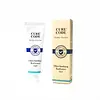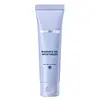What's inside
What's inside
 Key Ingredients
Key Ingredients

 Benefits
Benefits

 Concerns
Concerns

 Ingredients Side-by-side
Ingredients Side-by-side

Water
Skin ConditioningNiacinamide
Smoothing1,2-Hexanediol
Skin ConditioningPanthenol
Skin ConditioningEthyl Linoleate
EmollientCaprylic/Capric Triglyceride
MaskingCetearyl Alcohol
EmollientAmmonium Acryloyldimethyltaurate/Vp Copolymer
Centella Asiatica Extract
CleansingAcetyl Glucosamine
Skin ConditioningBifida Ferment Lysate
Skin ConditioningResveratrol
AntioxidantPolyglyceryl-10 Distearate
EmulsifyingGlyceryl Stearate
Emollient4-T-Butylcyclohexanol
MaskingSodium Hyaluronate
HumectantSorbitan Stearate
EmulsifyingPhytosterols
Skin ConditioningN-Palmitoyl Serinol
Skin ProtectingHypericum Perforatum Flower Extract
Skin ConditioningButylene Glycol
HumectantPalmitic Acid
EmollientCeramide NP
Skin ConditioningCarbomer
Emulsion StabilisingPalmitoyl Tetrapeptide-10
Skin ConditioningAcetyl Dipeptide-1 Cetyl Ester
Skin ConditioningSialyllactose
Skin ConditioningCetyl Palmitate
EmollientStearic Acid
CleansingPolysorbate 80
EmulsifyingPentylene Glycol
Skin ConditioningAllantoin
Skin ConditioningSodium Benzoate
MaskingHydrogenated Lecithin
EmulsifyingCitric Acid
BufferingSorbitan Laurate
EmulsifyingMyristic Acid
CleansingTocopherol
AntioxidantHydroxyethylcellulose
Emulsion StabilisingWater, Niacinamide, 1,2-Hexanediol, Panthenol, Ethyl Linoleate, Caprylic/Capric Triglyceride, Cetearyl Alcohol, Ammonium Acryloyldimethyltaurate/Vp Copolymer, Centella Asiatica Extract, Acetyl Glucosamine, Bifida Ferment Lysate, Resveratrol, Polyglyceryl-10 Distearate, Glyceryl Stearate, 4-T-Butylcyclohexanol, Sodium Hyaluronate, Sorbitan Stearate, Phytosterols, N-Palmitoyl Serinol, Hypericum Perforatum Flower Extract, Butylene Glycol, Palmitic Acid, Ceramide NP, Carbomer, Palmitoyl Tetrapeptide-10, Acetyl Dipeptide-1 Cetyl Ester, Sialyllactose, Cetyl Palmitate, Stearic Acid, Polysorbate 80, Pentylene Glycol, Allantoin, Sodium Benzoate, Hydrogenated Lecithin, Citric Acid, Sorbitan Laurate, Myristic Acid, Tocopherol, Hydroxyethylcellulose
Water
Skin ConditioningPropanediol
SolventNiacinamide
SmoothingPanthenol
Skin Conditioning1,2-Hexanediol
Skin ConditioningCaprylic/Capric Triglyceride
MaskingEthylhexyl Isononanoate
EmollientMyristoyl/Palmitoyl Oxostearamide/Arachamide Mea
Skin ConditioningAmmonium Acryloyldimethyltaurate/Vp Copolymer
Sorbitan Stearate
EmulsifyingGlyceryl Stearate
EmollientButylene Glycol
HumectantGlycerin
HumectantPhytosterols
Skin ConditioningCaprylyl Glycol
EmollientLactic Acid
BufferingGlycolic Acid
BufferingCarbomer
Emulsion StabilisingStearic Acid
CleansingResveratrol
AntioxidantSodium Hyaluronate
HumectantXanthan Gum
EmulsifyingHeptasodium Hexacarboxymethyl Dipeptide-12
Skin ConditioningGlutathione
Dipotassium Glycyrrhizate
HumectantSorbitan Laurate
EmulsifyingSuperoxide Dismutase
AntioxidantChlorella Vulgaris Extract
Skin ConditioningBeta-Glucan
Skin ConditioningZinc Gluconate
Skin ConditioningHydroxyethylcellulose
Emulsion StabilisingAcetyl Dipeptide-1 Cetyl Ester
Skin ConditioningTetradecyl Aminobutyroylvalylaminobutyric Urea Trifluoroacetate
Skin ConditioningPolyvinyl Alcohol
Magnesium Chloride
Potassium Phosphate
BufferingProline
Skin ConditioningPalmitic Acid
EmollientLysine
Skin ConditioningHistidine
HumectantGlycine
BufferingGlutamine
Skin ConditioningArginine
MaskingWater, Propanediol, Niacinamide, Panthenol, 1,2-Hexanediol, Caprylic/Capric Triglyceride, Ethylhexyl Isononanoate, Myristoyl/Palmitoyl Oxostearamide/Arachamide Mea, Ammonium Acryloyldimethyltaurate/Vp Copolymer, Sorbitan Stearate, Glyceryl Stearate, Butylene Glycol, Glycerin, Phytosterols, Caprylyl Glycol, Lactic Acid, Glycolic Acid, Carbomer, Stearic Acid, Resveratrol, Sodium Hyaluronate, Xanthan Gum, Heptasodium Hexacarboxymethyl Dipeptide-12, Glutathione, Dipotassium Glycyrrhizate, Sorbitan Laurate, Superoxide Dismutase, Chlorella Vulgaris Extract, Beta-Glucan, Zinc Gluconate, Hydroxyethylcellulose, Acetyl Dipeptide-1 Cetyl Ester, Tetradecyl Aminobutyroylvalylaminobutyric Urea Trifluoroacetate, Polyvinyl Alcohol, Magnesium Chloride, Potassium Phosphate, Proline, Palmitic Acid, Lysine, Histidine, Glycine, Glutamine, Arginine
Ingredients Explained
These ingredients are found in both products.
Ingredients higher up in an ingredient list are typically present in a larger amount.
1,2-Hexanediol is a synthetic liquid and another multi-functional powerhouse.
It is a:
- Humectant, drawing moisture into the skin
- Emollient, helping to soften skin
- Solvent, dispersing and stabilizing formulas
- Preservative booster, enhancing the antimicrobial activity of other preservatives
Acetyl Dipeptide-1 Cetyl Ester is a peptide composed of amino acids arginine and tyrosine.
This peptide is considered a neurotransmitter peptide, meaning it has pain-relieving and relaxing properties. It has the ability to calm skin irritation from external factors such as chemical stinging or heat.
Neurotransmitter peptides are also often called "botox in a bottle". This is because these peptides have the ability to relax the muscles.
Though relaxing the muscles can prevent expression lines (as we have seen in botox), the studies do not show these peptides to be a botox replacement. The effects of this muscle relaxation is also short-term, as opposed to longer-term results from botox.
Learn more about Acetyl Dipeptide-1 Cetyl EsterAmmonium Acryloyldimethyltaurate/Vp Copolymer (let's call it AAVC for short) is a synthetically created polymer. It's used as a film-forming agent and used to thicken the consistency of products.
AAVC is able to increase the consistency and viscosity of products due to its large molecule size. It also prevents ingredients from separating.
Butylene Glycol (or BG) is used within cosmetic products for a few different reasons:
Overall, Butylene Glycol is a safe and well-rounded ingredient that works well with other ingredients.
Though this ingredient works well with most skin types, some people with sensitive skin may experience a reaction such as allergic rashes, closed comedones, or itchiness.
Learn more about Butylene GlycolThis ingredient is an emollient, solvent, and texture enhancer. It is considered a skin-softener by helping the skin prevent moisture loss.
It helps thicken a product's formula and makes it easier to spread by dissolving clumping compounds.
Caprylic Triglyceride is made by combining glycerin with coconut oil, forming a clear liquid.
While there is an assumption Caprylic Triglyceride can clog pores due to it being derived from coconut oil, there is no research supporting this.
Learn more about Caprylic/Capric TriglycerideCarbomer is a polymer of acrylic acid. Its main role is to create a gel consistency.
A high amount of carbomer can cause pilling or balling up of products. Don't worry, most products contain 1% or less of carbomer.
Glyceryl Stearate is a mix of glycerin and stearic acid.
It is used to stabilize the mixing of water and oil ingredients. By preventing these ingredients from separating, it can help elongate shelf life. It can also help thicken the product's texture.
As an emollient, it helps soften skin and supports barrier-replenishing ingredients.
In cosmetics, Glyceryl Stearate is often made from vegetable oils or synthetically produced.
This ingredient may not be fungal-acne safe
Fun fact: The human body also creates Glyceryl Stearate naturally.
Learn more about Glyceryl StearateHydroxyethylcellulose is used to improve the texture of products. It is created from a chemical reaction involving ethylene oxide and alkali-cellulose. Cellulose is a sugar found in plant cell walls and help give plants structure.
This ingredient helps stabilize products by preventing ingredients from separating. It can also help thicken the texture of a product.
This ingredient can also be found in pill medicines to help our bodies digest other ingredients.
Learn more about HydroxyethylcelluloseNiacinamide is a multitasking form of vitamin B3 that strengthens the skin barrier, reduces pores and dark spots, regulates oil, and improves signs of aging.
And the best part? It's gentle and well-tolerated by most skin types, including sensitive and reactive skin.
You might have heard of "niacin flush", or the reddening of skin that causes itchiness. Niacinamide has not been found to cause this.
In very rare cases, some individuals may not be able to tolerate niacinamide at all or experience an allergic reaction to it.
If you are experiencing flaking, irritation, and dryness with this ingredient, be sure to double check all your products as this ingredient can be found in all categories of skincare.
When incorporating niacinamide into your routine, look out for concentration amounts. Typically, 5% niacinamide provides benefits such as fading dark spots. However, if you have sensitive skin, it is better to begin with a smaller concentration.
When you apply niacinamide to your skin, your body converts it into nicotinamide adenine dinucleotide (NAD). NAD is an essential coenzyme that is already found in your cells as "fuel" and powers countless biological processes.
In your skin, NAD helps repair cell damage, produce new healthy cells, support collagen production, strengthen the skin barrier, and fight environmental stressors (like UV and pollution).
Our natural NAD levels start to decline with age, leading to slower skin repair, visible aging, and a weaker skin barrier. By providing your skin niacinamide, you're recharging your skin's NAD levels. This leads to stronger, healthier, and younger looking skin.
Another name for vitamin B3 is nicotinamide. This vitamin is water-soluble and our bodies don't store it. We obtain Vitamin B3 from either food or skincare. Meat, fish, wheat, yeast, and leafy greens contain vitamin B3.
The type of niacinamide used in skincare is synthetically created.
Learn more about NiacinamidePalmitic Acid is a fatty acid naturally found in our skin and in many plant and animal sources. In cosmetics, it is usually derived from palm oil. It serves many purposes in skincare, acting as a cleanser, emollient, and emulsifier.
As an emollient, palmitic acid helps soften and smooth the skin by preventing water loss. In cleansers, it helps remove oil and dirt while creating foam.
Its emulsifying properties help stabilize products by keeping water and oil-based ingredients from separating.
This may not be suitable for fungal acne-prone skin, as fatty acids like this can sometimes trigger breakouts in sensitive individuals.
Learn more about Palmitic AcidPanthenol is a common ingredient that helps hydrate and soothe the skin. It is found naturally in our skin and hair.
There are two forms of panthenol: D and L.
D-panthenol is also known as dexpanthenol. Most cosmetics use dexpanthenol or a mixture of D and L-panthenol.
Panthenol is famous due to its ability to go deeper into the skin's layers. Using this ingredient has numerous pros (and no cons):
Like hyaluronic acid, panthenol is a humectant. Humectants are able to bind and hold large amounts of water to keep skin hydrated.
This ingredient works well for wound healing. It works by increasing tissue in the wound and helps close open wounds.
Once oxidized, panthenol converts to pantothenic acid. Panthothenic acid is found in all living cells.
This ingredient is also referred to as pro-vitamin B5.
Learn more about PanthenolPhytosterols come from plants, nuts, and whole grains. These compounds have skin soothing and moisturizing properties.
Fun fact: They are similar to cholesterol and can help lower cholesterol levels.
Resveratrol is a famous emerging antioxidant. It is a good alternative for sensitive skin types who cannot tolerate retinoids.
This antioxidant is most famous for it's anti-aging benefits. Studies show it combats the signs of aging by:
Besides anti-aging, this ingredient also helps with skin brightening and soothing.
The most effective forms of resveratrol are isobutyrate and butyrate. These have the strongest effect on increasing A1 collagen and reducing inflammation.
A note on it being a retinoid alternative:
Despite it's amazing skin benefits, it is not a replacement for retinoids. However, it is recommended for people with sensitive skin or intolerance to retinoids.
Resveratrol is naturally found in grapes, peanuts, and berries.
Learn more about ResveratrolSodium Hyaluronate is hyaluronic acid's salt form. It is commonly derived from the sodium salt of hyaluronic acid.
Like hyaluronic acid, it is great at holding water and acts as a humectant. This makes it a great skin hydrating ingredient.
Sodium Hyaluronate is naturally occurring in our bodies and is mostly found in eye fluid and joints.
These are some other common types of Hyaluronic Acid:
Learn more about Sodium HyaluronateSorbitan Laurate is created from lauric acid and derivatives from sorbitol. It is an emulsifier.
Sorbitan Stearate comes from sorbitol and stearic acid. Sorbitol is a type of sugar and stearic acid is a fatty acid.
It is used as an emulsifier and helps ingredients stay together by creating water-in-oil emulsions.
This ingredient may not be Malassezia folliculitis, or fungal-acne safe.
Stearic Acid is a fatty acid. It is an emollient, emulsifier, and texture enhancer.
As an emollient, stearic acid helps soften skin. It aids the skin's protective barrier by preventing water loss. It also provides a gentle cleansing effect without stripping away natural oils.
Stearic acid may also be used to enhance the texture of products. It can add volume and stabilize ingredients such as water and oil. This can help water and oil ingredients from separating.
Sources of stearic acid include animal or vegetable fats/oils such as coconut or shea. It can be naturally found in butter, cocoa butter, shea butter, vegetable fats, and animal tallow.
This ingredient may not be Malassezia folliculitis, or fungal-acne safe.
Learn more about Stearic AcidWater. It's the most common cosmetic ingredient of all. You'll usually see it at the top of ingredient lists, meaning that it makes up the largest part of the product.
So why is it so popular? Water most often acts as a solvent - this means that it helps dissolve other ingredients into the formulation.
You'll also recognize water as that liquid we all need to stay alive. If you see this, drink a glass of water. Stay hydrated!
Learn more about Water